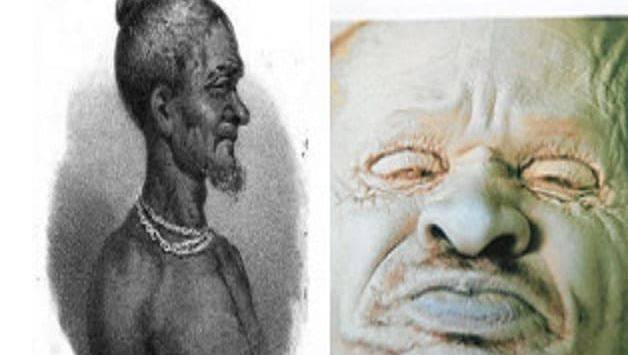There are a lot of African and Ghanaian stories that have not been told to the younger generation. The main reasons why these stories have been shut to our ears are two main reasons. The first reason is Christianity. The Christian fraternity sees these stories about our ancestors as traditionalists, ungodly, or heathens who worshipped nothing but idols.
In this post, we will learn about a Ghanaian king who was beheaded by the Dutch for refusing to buy guns from the Dutch. This king was so wise, strong, and patriotic that he refused to take part in anything the Europeans offered. The name of this king was Nana Badu Bonsu.
The Akan King who was beheaded by the Dutch
The Akan group is the largest ethnic group in Ghana. They stretch from the middle belt of Ghana to the southern part of the country. They are one of the Kwa branches of dialect, and according to sources, the Akan migrated from Sudan or the ancient Ghana empire in the 10th century AD. One of the Akan ethnic groups that occupied the coastal belt of Ghana is called Ahanta.
The king who was beheaded by the Dutch was an Ahanta king called Nana Badu Bonsu. The Ashanta's live near the Dutch Gold Coast, so they were the first group to trade and mingle with the Dutch when they arrived in present-day Ghana.
In 1887, Nana Badu Bonsu rebelled against the Dutch after he found out that they were of no good to his people and were more like parasites and instigators. The Dutch were selling guns to the Wassa people, who were located in the northern part of Ahanta. The guns the Dutch sold to the Wassa were used to raid villages, capture weak tribes, and sell them as slaves to the Dutch.
Badu Bonsu disputed with the Dutch and warned them to stop, but the Dutch bribed his close friend, who happens to be the king of Sekondi, called Nana Etsrue, to buy and sell the guns to the Wassa people. This gesture infuriated Nana Badu Bonsu and killed the Dutch generals who supplied the guns to his friend and the Wassa. He threatened to kill the king of Sekondi for allowing the Dutch to sell guns to him and accepting the bribe from the them.
When the king of Sekondi heard that Badu Bonsu wanted to kill him, he fled to Elmina, which was the Dutch capital and stronghold, for refuge. The king was angry that the Dutch had taken things into their own hands by doing what they liked, so he marched to Sekondi to have two Dutch soldiers killed.
As soon as the news reached the Dutch governor in Elmina that two of his generals had been killed, he mobilized forces to Ahanta to have the king arrested by himself. In retaliation, Nana Badu Bonsu also mobilized his forces and, within 30 minutes, met the Dutch at the present-day Takoradi Harbor area and massacred his forces.
The Dutch general, who was the only one left, fled to the Dutch fort called Fort Taccary, which has been misspelled as Takoradi, and killed the Dutch general. In February 1837, news reached the Hague, the capital city of the Dutch, that the governor of the Gold Coast and his top generals had been killed. William I quickly called a general meeting and chose their best military general, General Van Veneer, to lead an expedition of two hundred well-trained Dutch mercenaries to the Ahanta on the Gold Coast to capture Nana Badu Bonsu.
The Dutch expedition landed on the Gold Coast in 1838, mobilized local forces of the Wassa, Fanti, Sekondi, and Axim, and marched to Takoradi or Ahanta. After two months of fierce fighting, the Dutch, who were well equipped and supported by some Akan troops, captured Nana Badu Bonsu on July 26, 1838.
Nana Badu Bonsu was sent to Elmina be trailed and convicted. The next day, on the 27th, the Dutch hanged and killed Nana Badu Bonsu. After killing him, the Dutch beheaded him, put the head in formaldehyde, placed it in a jar, and sent it to the Netherlands. The majority of Nana Badu Bonsu family members and the Ahanta people were also hanged.
The Ahanta town of Busua and present-day Takoradi were utterly burned and destroyed. Many Ahanta people fled from their own towns and cities, and the rest were also sold into slavery. The head was returned to Ghana in 2009 to be reburied in Busua.


